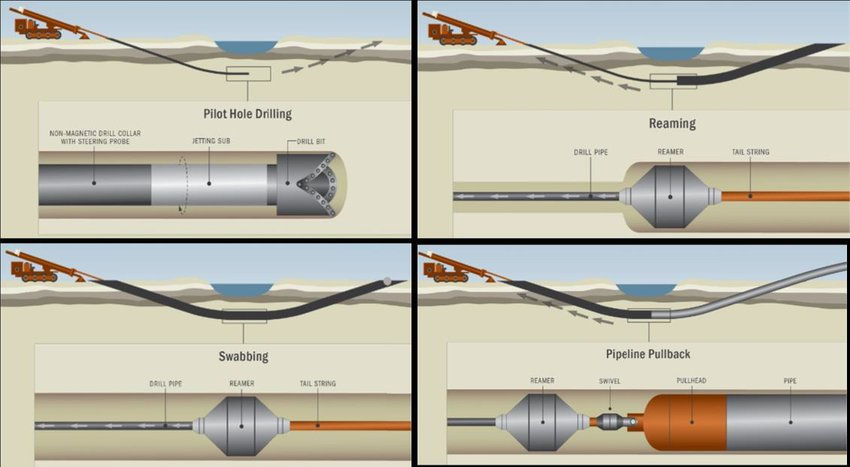Why Underground Boring Contractors Are the Solution for Minimally Invasive Construction?
- Grid Tech
- Jul 11, 2023
- 4 min read
Micro tunneling:-evolving world of construction, the demand for more efficient and environmentally-friendly methods is on the rise. Minimally invasive construction techniques have emerged as a sustainable and cost-effective alternative to traditional excavation methods. Among the key players in this realm are underground boring contractors, who have revolutionized the industry with their expertise in trenchless technology. By employing innovative techniques such as horizontal directional drilling (HDD) and Microtunneling, these contractors offer a solution that minimizes disruption to the environment, reduces project timelines and enhances cost-efficiency.
So, in this article, we will delve into the reasons why underground boring contractors have become the go-to choice for achieving minimally invasive construction.

Understanding Minimally Invasive Construction:
Minimally invasive construction refers to a set of techniques and practices aimed at minimizing the disruption caused by traditional excavation methods. The primary objectives of minimally invasive construction are to reduce environmental impact, preserve existing infrastructure, enhance project safety and optimize cost-efficiency.
Unlike traditional excavation, which involves extensive digging and surface disturbance, minimally invasive construction focuses on utilizing innovative approaches to complete project with minimal disruption and environmental damage. By preserving trees, reducing soil erosion and minimizing the disturbance to water bodies, underground boring contractors contributes to the conservation of the natural environment and its biodiversity.
The Rise of Underground Boring Contractors:
The rise of underground boring contractors can be attributed to the evolution and advancement of trench less technology in the construction industry. Trench less technology refers to a set of techniques that enable the installation, repair or replacement of underground infrastructure without the need for extensive excavation.
As the demand for more efficient and environmentally friendly construction methods increased, underground boring contractors emerged as key players in promoting minimally invasive construction. These contractors possess specialized knowledge and expertise in utilizing techniques like HDD and Micro tunneling. By adopting these innovative methods, underground boring contractors can navigate through challenging ground conditions, minimize surface disruption and preserve existing infrastructure.
Their ability to execute projects with precision, efficiency and reduced environmental impact has positioned them as leading providers of trench less construction solutions. As a result, the industry has witnessed a significant rise in the utilization and recognition of underground boring contractors for a wide range of construction and utility installation projects.

Horizontal Directional Drilling (HDD): The Core Technique
This advanced underground utility installation technique is employed by underground boring contractors in minimally invasive construction. The process involves drilling a curved or horizontal path underground to install or repair underground infrastructure, like utility lines, pipelines or cables, without the need for extensive excavation.
HDD starts with a small pilot hole drilled along the desired path using a directional drilling machine. Once the pilot hole is established, a reaming process enlarges the hole to accommodate the desired size of the infrastructure. Finally, the infrastructure, such as pipes or conduits, is pulled or pushed into place through the drilled hole.
The advantages of HDD are manifold. Firstly, it minimizes surface disruption and disturbance, making it ideal for urban environments with dense infrastructure networks. Additionally, HDD preserves the integrity of existing infrastructure, as it can navigate beneath roads, rivers, and environmentally sensitive areas without causing damage. Moreover, this process reduces the environmental impact by minimizing soil disturbance, erosion and the need for extensive excavation, thus protecting natural habitats.
So, on a simple text, HDD stands as a vital core technique for underground boring contractors, enabling them to achieve efficient and minimally invasive installations of underground infrastructure.
Microtunneling:
Micro tunneling is a precise technique used by underground boring contractors to install underground pipelines, conduits, or cables with minimal disruption to the surface. The process involves the used of a micro-tunnel boring machine (MTBM) to excavate a small diameter tunnel along the desired path. The MTBM is guided by laser technology or a remote-control system, ensuring accurate alignment and grade control.
Micro tunneling offers several advantages in minimally invasive construction. It provides precise and accurate tunneling, allowing for the installation of underground infrastructure with minimal ground settlement and surface disturbance. The technique is versatile, capable of navigating through various soil conditions, including clay, sand and rock. It also accelerates project timelines by minimizing the need for extensive excavation and reducing construction-related disruptions.

Collaborative Approach and Comprehensive Services:
Underground boring contractors adopt a collaborative approach and offer comprehensive services to ensure the success of minimally invasive construction projects. Collaboration is essential in fostering effective communication and cooperation between the contractor, project stakeholders and other involved parties. This approach facilitates better project planning, risk mitigation and problem-solving.
Moreover, underground boring contractors provide comprehensive services throughout the project lifecycle. They offer expertise and specialized knowledge in feasibility studies, site assessments, design and engineering support, construction and project management, quality control and post-construction services.
This end-to-end service ensures seamless coordination, efficient execution and high-quality outcomes. By providing a full range of services, underground boring contractors become trusted partners, supporting clients from project initiation to completion and ensuring the successful implementation of minimally invasive construction techniques.
Conclusion
In an era where sustainability and efficiency are paramount, underground boring contractors have emerged as pioneers in the field of minimally invasive construction. Through their utilization of trench less technology, specifically HDD and Micro tunneling, these contractors have revolutionized the way infrastructure projects are executed.
By minimizing environmental impact, reducing disruption to existing infrastructure and offering comprehensive services, underground boring contractors are leading the charge towards a more sustainable and cost-effective future. Embracing their expertise and collaborative approach will not only benefit individual construction projects but also contribute to the overall development of smarter, greener and more efficient cities.


Comments